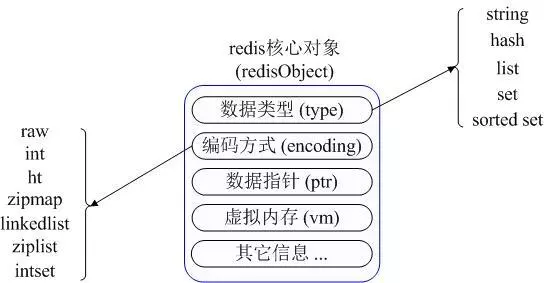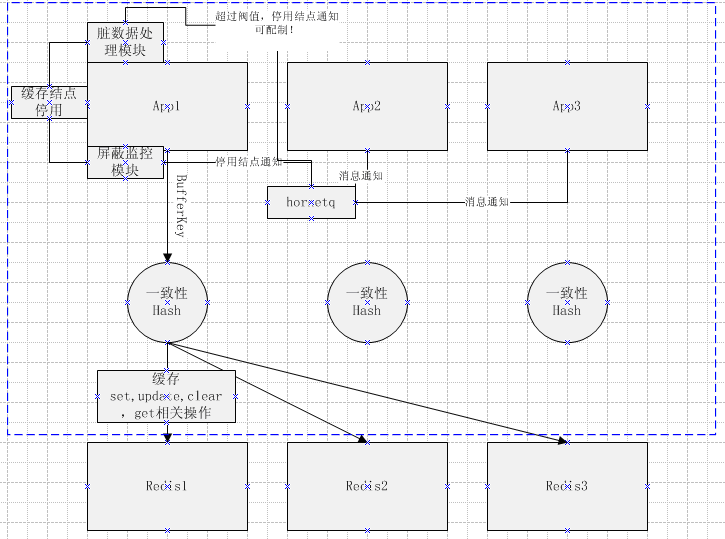What are the high-end technologies of Java?
Commonly used data types in Redis
The five commonly used data types in Redis are: String, Hash, List, Set and Sorted set

Redis usage scenarios
1.Counting
2.Display the top list of the latest, hottest, highest click rate, highest activity, etc.
3.The user’s recent access records are also Very good application scenarios of redis list
4. Write and consume the queue through the lpop and lpush interfaces of the list
5. The functional expansion of Redis's Lua actually brings more application scenarios to Redis. You You can write several command combinations as a small non-blocking transaction or update logic
6. The master-slave data synchronization function provided by Redis is actually a powerful functional extension of the cache
Summary
So many applications are inseparable from all the features of Redis
Uncover the mystery of Redis
Redis is an open source (KEY-VALUE key-value pair) , an in-memory data structure server that can be used as a database, cache, and message queue agent. It adopts a single-process single-thread model and has strong concurrency capabilities. It is the mainstream distributed caching tool in the current Internet architecture.

Redis high-performance cache architecture design
1. Architecture design
Since redis is a single point, the project If you need to use it, you must implement distribution yourself. The basic architecture diagram is as follows:

2. Distributed implementation
Do consistent hashing through key to achieve key correspondence The distribution of redis nodes.
Implementation of consistent hashing:
Hash value calculation: By supporting two calculation methods, MD5 and MurmurHash, MurmurHash is used by default for efficient hash calculation.
Achievement of consistency: simulate the ring structure through java's TreeMap to achieve uniform distribution
3.Client selection
For jedis modification The main thing is the modification of the partition module, so that it supports partitioning based on BufferKey. Different ShardInfo can be initialized based on different redis node information. At the same time, the underlying implementation of JedisPool is also modified so that the connection pool pool supports following data. The construction method of key and value creates different jedis connection clients according to different ShardInfos to achieve the effect of partitioning and is called by the application layer
4. Module description
Dirty data processing module, handles failed cache operations.
Shield monitoring module, for abnormal monitoring of jedis operations, when an abnormality occurs in a node, it can control the removal of redis nodes and other operations.
The entire distributed module uses hornetq to remove abnormal redis nodes. The addition of new nodes can also be achieved through the reload method. (This module can also be easily implemented for adding new nodes)
The above is the detailed content of What are the high-end technologies of Java?. For more information, please follow other related articles on the PHP Chinese website!

Hot AI Tools

Undresser.AI Undress
AI-powered app for creating realistic nude photos

AI Clothes Remover
Online AI tool for removing clothes from photos.

Undress AI Tool
Undress images for free

Clothoff.io
AI clothes remover

Video Face Swap
Swap faces in any video effortlessly with our completely free AI face swap tool!

Hot Article

Hot Tools

Notepad++7.3.1
Easy-to-use and free code editor

SublimeText3 Chinese version
Chinese version, very easy to use

Zend Studio 13.0.1
Powerful PHP integrated development environment

Dreamweaver CS6
Visual web development tools

SublimeText3 Mac version
God-level code editing software (SublimeText3)

Hot Topics
 1666
1666
 14
14
 1425
1425
 52
52
 1328
1328
 25
25
 1273
1273
 29
29
 1253
1253
 24
24
 Break or return from Java 8 stream forEach?
Feb 07, 2025 pm 12:09 PM
Break or return from Java 8 stream forEach?
Feb 07, 2025 pm 12:09 PM
Java 8 introduces the Stream API, providing a powerful and expressive way to process data collections. However, a common question when using Stream is: How to break or return from a forEach operation? Traditional loops allow for early interruption or return, but Stream's forEach method does not directly support this method. This article will explain the reasons and explore alternative methods for implementing premature termination in Stream processing systems. Further reading: Java Stream API improvements Understand Stream forEach The forEach method is a terminal operation that performs one operation on each element in the Stream. Its design intention is
 PHP: A Key Language for Web Development
Apr 13, 2025 am 12:08 AM
PHP: A Key Language for Web Development
Apr 13, 2025 am 12:08 AM
PHP is a scripting language widely used on the server side, especially suitable for web development. 1.PHP can embed HTML, process HTTP requests and responses, and supports a variety of databases. 2.PHP is used to generate dynamic web content, process form data, access databases, etc., with strong community support and open source resources. 3. PHP is an interpreted language, and the execution process includes lexical analysis, grammatical analysis, compilation and execution. 4.PHP can be combined with MySQL for advanced applications such as user registration systems. 5. When debugging PHP, you can use functions such as error_reporting() and var_dump(). 6. Optimize PHP code to use caching mechanisms, optimize database queries and use built-in functions. 7
 PHP vs. Python: Understanding the Differences
Apr 11, 2025 am 12:15 AM
PHP vs. Python: Understanding the Differences
Apr 11, 2025 am 12:15 AM
PHP and Python each have their own advantages, and the choice should be based on project requirements. 1.PHP is suitable for web development, with simple syntax and high execution efficiency. 2. Python is suitable for data science and machine learning, with concise syntax and rich libraries.
 PHP vs. Other Languages: A Comparison
Apr 13, 2025 am 12:19 AM
PHP vs. Other Languages: A Comparison
Apr 13, 2025 am 12:19 AM
PHP is suitable for web development, especially in rapid development and processing dynamic content, but is not good at data science and enterprise-level applications. Compared with Python, PHP has more advantages in web development, but is not as good as Python in the field of data science; compared with Java, PHP performs worse in enterprise-level applications, but is more flexible in web development; compared with JavaScript, PHP is more concise in back-end development, but is not as good as JavaScript in front-end development.
 PHP vs. Python: Core Features and Functionality
Apr 13, 2025 am 12:16 AM
PHP vs. Python: Core Features and Functionality
Apr 13, 2025 am 12:16 AM
PHP and Python each have their own advantages and are suitable for different scenarios. 1.PHP is suitable for web development and provides built-in web servers and rich function libraries. 2. Python is suitable for data science and machine learning, with concise syntax and a powerful standard library. When choosing, it should be decided based on project requirements.
 PHP's Impact: Web Development and Beyond
Apr 18, 2025 am 12:10 AM
PHP's Impact: Web Development and Beyond
Apr 18, 2025 am 12:10 AM
PHPhassignificantlyimpactedwebdevelopmentandextendsbeyondit.1)ItpowersmajorplatformslikeWordPressandexcelsindatabaseinteractions.2)PHP'sadaptabilityallowsittoscaleforlargeapplicationsusingframeworkslikeLaravel.3)Beyondweb,PHPisusedincommand-linescrip
 PHP: The Foundation of Many Websites
Apr 13, 2025 am 12:07 AM
PHP: The Foundation of Many Websites
Apr 13, 2025 am 12:07 AM
The reasons why PHP is the preferred technology stack for many websites include its ease of use, strong community support, and widespread use. 1) Easy to learn and use, suitable for beginners. 2) Have a huge developer community and rich resources. 3) Widely used in WordPress, Drupal and other platforms. 4) Integrate tightly with web servers to simplify development deployment.
 PHP vs. Python: Use Cases and Applications
Apr 17, 2025 am 12:23 AM
PHP vs. Python: Use Cases and Applications
Apr 17, 2025 am 12:23 AM
PHP is suitable for web development and content management systems, and Python is suitable for data science, machine learning and automation scripts. 1.PHP performs well in building fast and scalable websites and applications and is commonly used in CMS such as WordPress. 2. Python has performed outstandingly in the fields of data science and machine learning, with rich libraries such as NumPy and TensorFlow.




